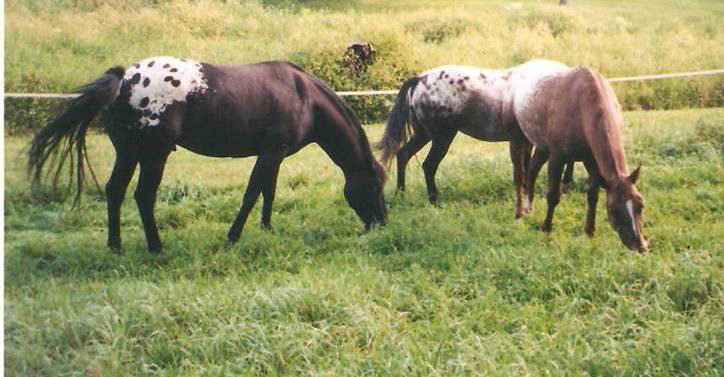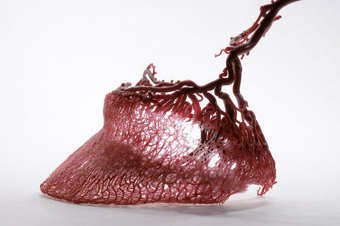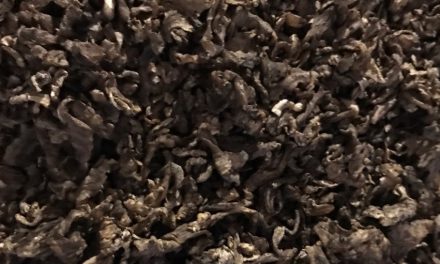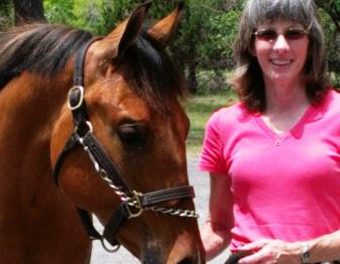THE WAY OF HORSES

Water, water everywhere…and not a drop to drink!
An average 1,000-pound horse produces about 2 ½ gallons of urine a day.
So, how do you keep stalls dry?
A stall that drains properly is the first step.
Constructing a good base will allow the urine to drain. Poor drainage means the bedding must absorb all the moisture.
It’s much easier to construct a good base before the barn is built.
One method of establishing a good base it to remove the top soil (save it for other projects) and then remove enough soil so you are about three feet deep.
The next step is to have the contractor place a layer of large stones, followed by a layer of small stones, then stone dust; followed by a final layer of clay or clay and sand mixture. Availability of materials will vary according to region. Check with a local contractor to find out what is best in your area.
Avoid using straight sand as your final layer. Horses ingesting sand can colic.
The center of each stall should be slightly higher than the sides, so urine will not puddle. You will have to replenish the clay every few years.
Solid, one-piece rubber mats will not allow the urine to drain.
Many barns have concrete floors. These barns must have good quality mats installed. Plenty of bedding needs to be used to absorb the urine.
Regardless of the floor type, the stall should be cleaned daily. Removal of the wet, urine soaked bedding will cut down on ammonia build-up.
There are several considerations when deciding on bedding: absorbency, dustiness, how well it cushions, possible allergies to the product, how digestible it is, and availability.
WOOD SHAVINGS
Soft wood shavings are more absorbent and safer for the horse than hard wood shavings. Pine and spruce are the most common sources for commercial soft wood shavings.
The soft wood shavings are generally safe to use. Occasionally a horse may be allergic to the pine resins. The symptoms shown by an allergic reaction will be bumps or hives.
Hard wood shavings can be dangerous to use. You must be absolutely certain there is no walnut, cherry, or cedar in the material.
The toxins produced by these products can cause laminitis. The horse does not need to eat the product – just standing on them allows the toxins to penetrate the hoof. Laminitis can occur within 12-24 hours of exposure, and can lead to severe lameness.
Dust is not usually a problem with wood shavings. The texture can vary and every person who has cleaned stalls has a preference. Unfortunately it’s pretty hard to tell what the texture is until you open the bag. Remember: shavings are a by-product so quality control is not perfect.
Wood shavings are not suitable for a foaling mare. The shavings will stick to the mare and newborn foal. Straw should be used in the stall as the foaling date approaches.
PELLETED BEDDING
Pelleted bedding is made from compressed soft woods. The resins, hydrocarbons, and any other moisture have been removed during the processing. This results in a highly absorbent product.
The tightly compressed pellets become fluffy when wet. If they are allowed to dry they can become dusty. Manufacturers recommend the wet spots not be removed, but mixed with the dry material. The daily routine advised is to remove the manure and mix the wet bedding with the dry. Occasionally a bag may need to be added. In time the stall will need to be stripped and new product used.
Pelleted bedding should not be used in a foaling stall.
PAPER BEDDING
Shredded paper and cardboard are the most common paper products used for horse bedding. They are very absorbent, but will mat when wet. This results in a poor cushion factor.
No dust is the main benefit of paper bedding. Paper based bedding products are low in allergenic mold spores, so great for horses with allergies.
PEAT MOSS
Peat moss is one of the most absorbent of all the bedding materials available. Dry peat moss will absorb 10 times its weight in moisture, making it heavy to remove when wet.
There is no dust – as long as it is kept moist. Horses that are prone to allergies seem to do well when bedded on peat. Mares should not be allowed to foal in peat moss, as it will stick to her and the foal.
Peat moss should be bedded deep. The deeper it is – the easier it is to clean the stall. It has a great cushion factor when bedded at 8-12 inches.
STRAW
Straw is the best bedding for a mare about to foal. It provides a good cushion and will not stick.
There can be dust if it was not baled properly. Straw is not as absorbent as some of the other products.
If a horse is not receiving enough good quality digestible fiber (hay) he will eat the straw bedding. As long as it is clean, not moldy, or dusty eating a small amount should not harm the horse. If the horse should eat large amounts of straw, impaction colic is possible.
* Earn Professional Certification as Horse Trainer, Stable Manager or Riding Instructor. All courses are online. Visit www.equinestudiesinstitute.org for information.



